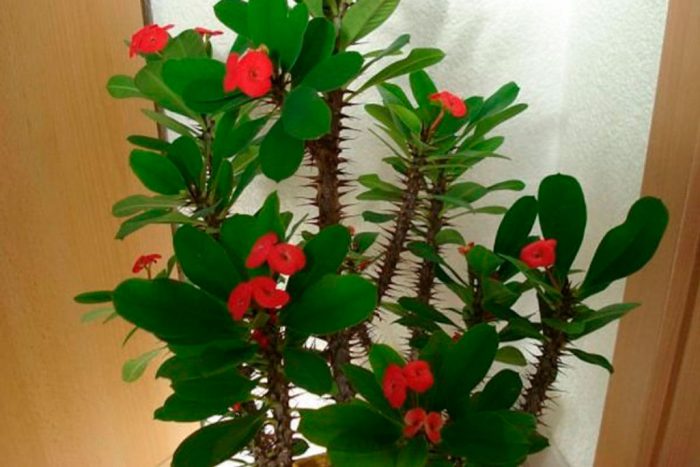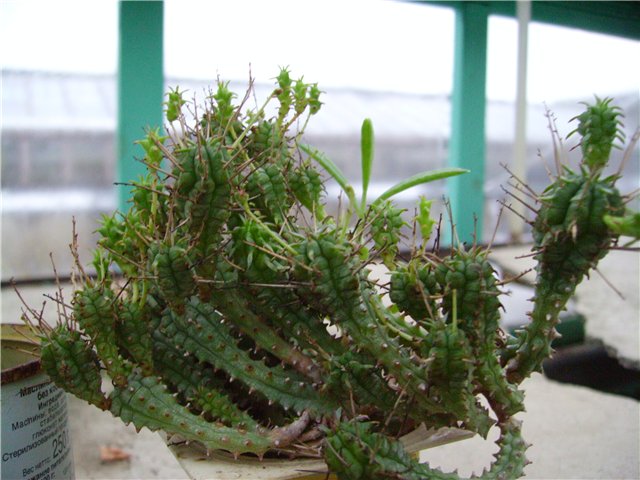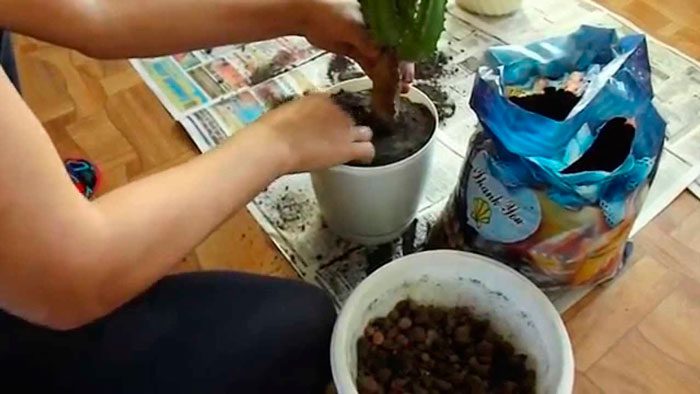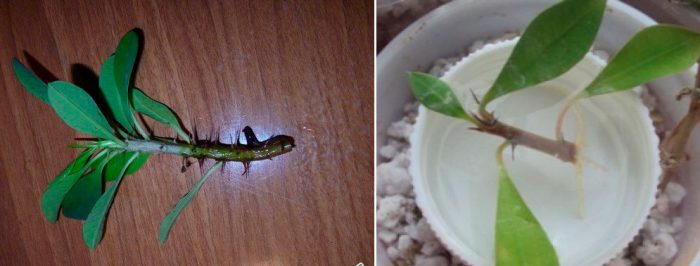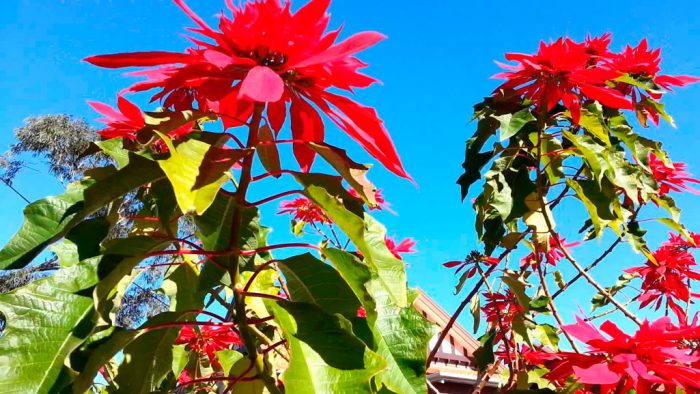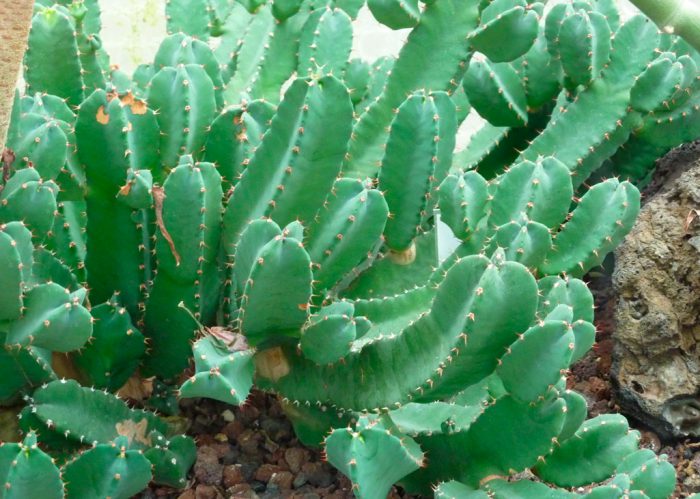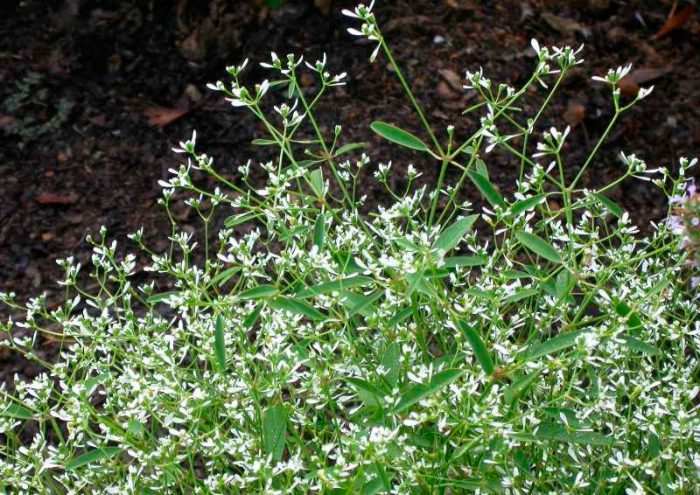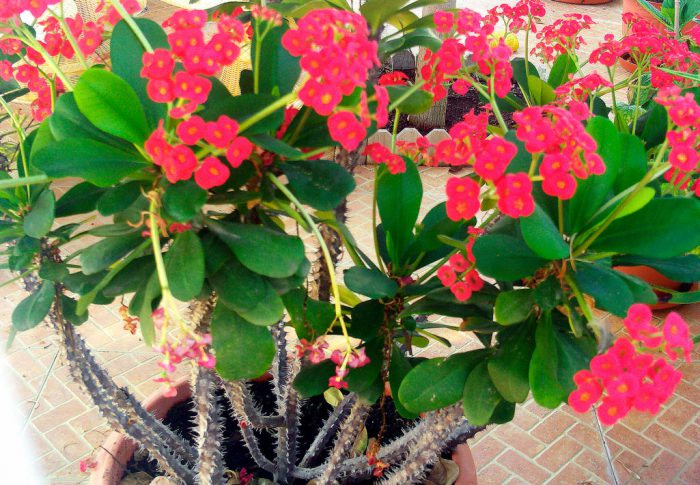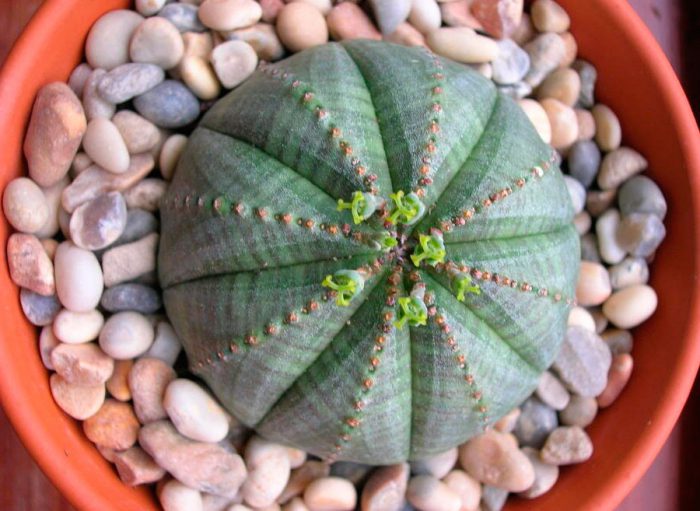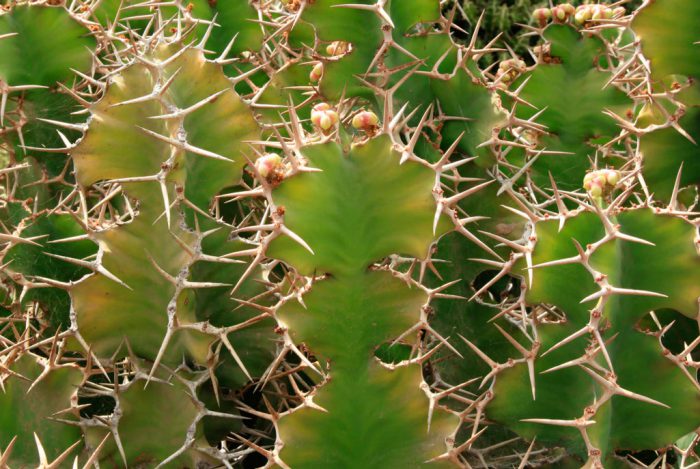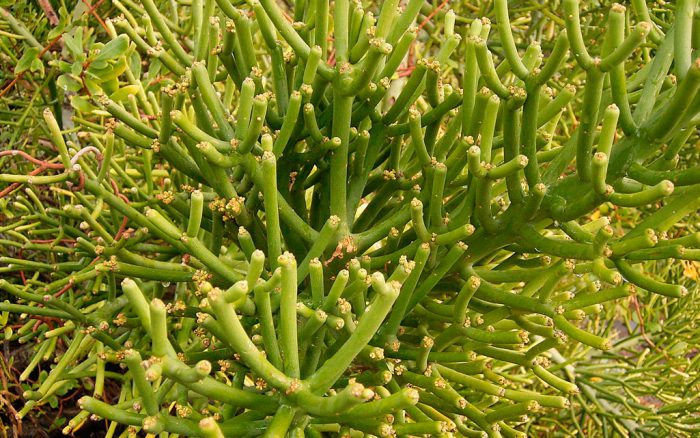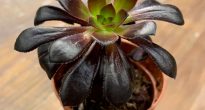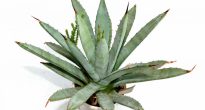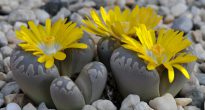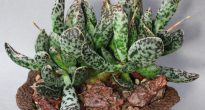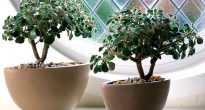Euphorbia (Euphorbia), which is also called spurge, Is the most numerous and well-known genus of plants related to the Euphorbiaceae family. It unites about 2 thousand very different plants. Such plants can be found in natural conditions in subtropical, tropical and temperate areas.
Most of these species are adapted for indoor cultivation. And the bulk of these plants come from the subtropics of Central America and Africa. Most of them are succulents, which have thickened stems that can store water. When grown indoors, milkweed is not afraid of low air humidity and irregular watering.
There are species that are very similar to cacti, for example, euphorbia cereus or triangular euphorbia. And also they are similar to flowering plants (poinsettia).
Almost all types of euphorbia have a juice containing toxic substances - euphorbin. Some species may be more poisonous, others less. This juice can leave a burn on the skin, lead to disruption of the gastrointestinal tract, and cause inflammation of the mucous membranes of the nose and eyes. In this regard, special care must be taken during the transplantation and reproduction of such a plant. Also, euphorbia should be placed in places that are difficult to reach for pets and small children.
Milkshakes are grateful for their popularity in a very effective form, undemanding care, as well as their durability. Most of these plants do not lose their attractive appearance even after many years.
Content
- 1 Home care for euphorbia
- 2 Video review
- 3 Main types
- 3.1 Euphorbia beautiful (Euphorbia pulcherrima)
- 3.2 Euphorbia resinifera
- 3.3 Euphorbia hypericifolia (Euphorbia hypericifolia)
- 3.4 Mille spurge (Euphorbia milii)
- 3.5 Puffy or obese spurge (Euphorbia obesa)
- 3.6 Large-horned spurge (Euphorbia grandicornis)
- 3.7 Triangular spurge (Euphorbia trigona)
- 3.8 Euphorbia tirucalli (Euphorbia tirucalli)
- 3.9 Euphorbia (Euphorbia leuconeura)
Home care for euphorbia
It is very easy to grow such plants indoors, because most of them are absolutely undemanding to care for. They are resistant to dryness of the soil, are not susceptible to attack by pests, and also feel great on southern windows.
Temperature regime
In summer, the air temperature should be from 20 to 25 degrees, and in winter - about 16 degrees. To a kind like poinsettia cold wintering is required, and all the others are quite capable of being in winter at normal room temperature.
Illumination
These are light-loving plants that are best placed on southern windows.If in winter there is little light in the milkweed and it is warm, then its shoots become strongly elongated, and decorativeness is lost. Absolutely all species can be transferred to the street in the warm season.
Humidity
Low air humidity is well tolerated by euphorbias. However, it is recommended to regularly spray them with lukewarm water for hygienic purposes (to remove dust).
How to water
Watering depends entirely on the type of plant. But almost all succulents are rarely watered. So, in winter, they need to be watered once every 4 weeks, while the earthen coma should not be allowed to completely dry out. During active growth and flowering, watering should be more abundant.
Top dressing
Top dressing is carried out in the spring and summer. For this, special fertilizers are used for indoor plants or for cacti.
Transplant features
Almost all types of euphorbia are slow-growing, so transplantation is carried out only if necessary. For small milkweed, low and small pots are chosen, and for tall plants, triangular milkweed and tirucallia, heavy and sufficiently deep dishes are needed. Good drainage is needed.
Earth mix
The soil should be loose and the root system should not be allowed to grow strongly. A suitable dredger consists of leaf, turf and peat soil, as well as sand, taken in equal portions. It is also recommended to pour a little brick chips or perlite into it. A soil mixture for cacti is also suitable.
How to propagate
Propagated by cuttings. Before planting the cutting, it should be dried for several hours. You may not cover the handle, but should be placed in a warm place. Rooting is quick and easy.
Pests and diseases
Almost all species are not susceptible to diseases and pests.
Video review
Main types
Euphorbia beautiful (Euphorbia pulcherrima)
It is also called poinsettia. This is one of the most popular home-grown milkweed. The flowering of this plant falls on Christmas (Catholic). However, it is not small flowers that betray a spectacular appearance to the plant, but bright leaves growing under the inflorescences. Depending on the variety, these leaves can be pink, deep red, and white. If the room is too warm and low humidity, then with the end of flowering, all the leaves of the plant fall off. This species is quite picky about care.
Euphorbia resinifera
This plant is cactus-like and has tetrahedral green-gray shoots. On the ribs there are warty projections on which there are thorns. This is a very non-capricious plant.
Euphorbia hypericifolia (Euphorbia hypericifolia)
Which is also called "Diamond Frost" - this non-capricious plant is very loved by flower growers. He is usually planted in hanging baskets. On the hat of pale green leaves, there are many small white flowers that are very similar to snow-white foam.
Mille spurge (Euphorbia milii)
Such a not very large thorny bush is also called a "crown of thorns". On its gray, powerful shoots, oblong leaves are located. The young shrub is very beautiful, as it contains many small flowers with bracts of a rich red or pale yellow color, which contrast with the dark green foliage. The old plant becomes similar to a prickly dry shrub. Feels great near the window located in the southern part of the room.
Puffy or obese spurge (Euphorbia obesa)
This succulent plant is very similar to a cactus. It has a stem in the shape of a ball, on which there are subtle ribs. It has no leaves or thorns.
Large-horned spurge (Euphorbia grandicornis)
It has a rather bizarre shape. Its fleshy branching stems are triangular. On the edges are large gray or brownish-yellow spines. Leaves grow on young shoots and fly around pretty soon.
Triangular spurge (Euphorbia trigona)
This rather showy tall plant has triangular branching stems. Leaves, which are oblong, grow at the ends of young stems. After a while, the leaves fall off.
Euphorbia tirucalli (Euphorbia tirucalli)
Such a succulent plant is undemanding to care for. The shoots of this very bushy milkweed are similar to small green sticks. It lacks both thorns and leaves.
Euphorbia (Euphorbia leuconeura)
This type is the most common. It has a pronounced trunk, which is ribbed, at the top of which there is a bunch of dark green, long leaves, on the surface of which white veins are clearly visible.

